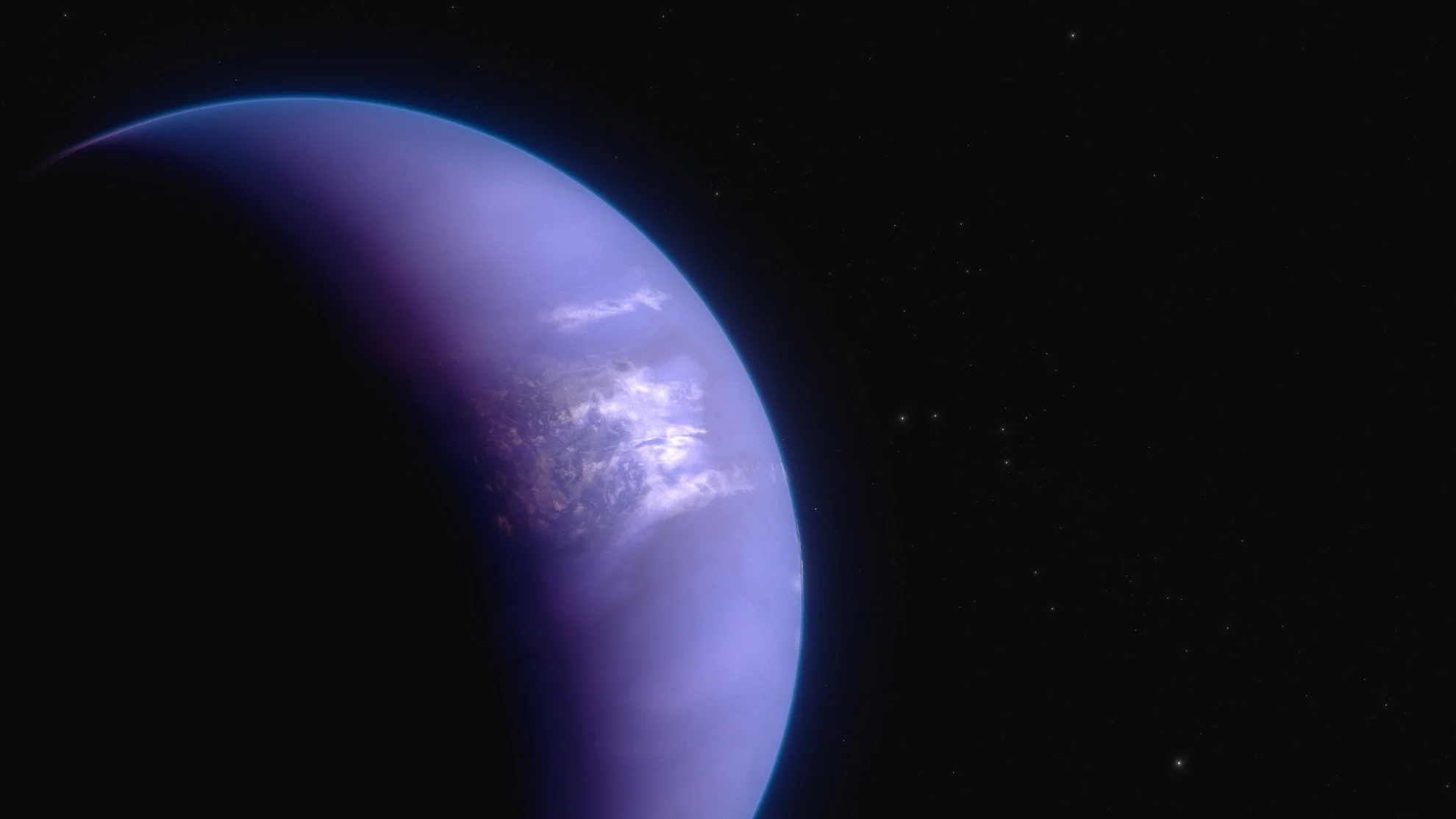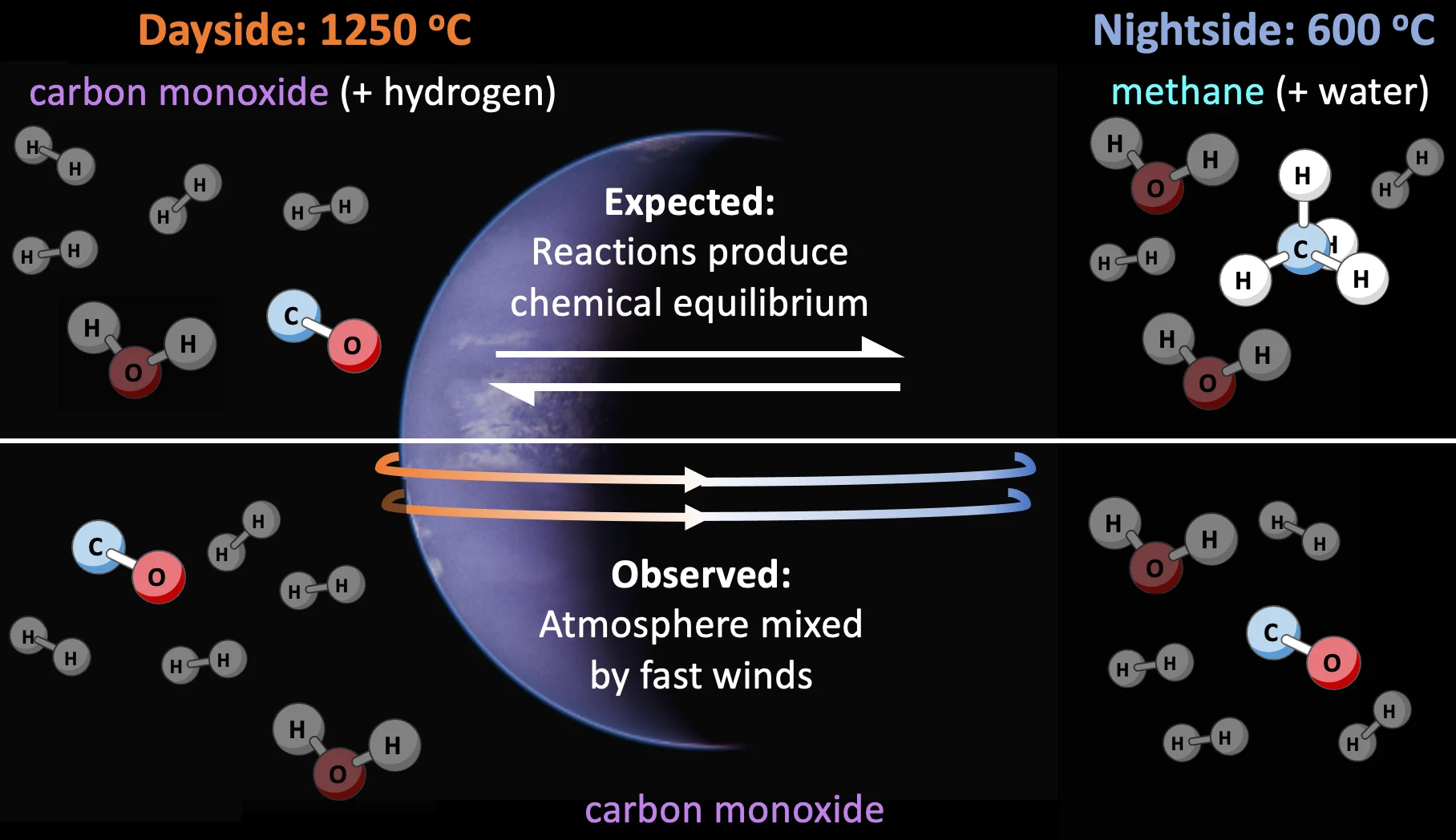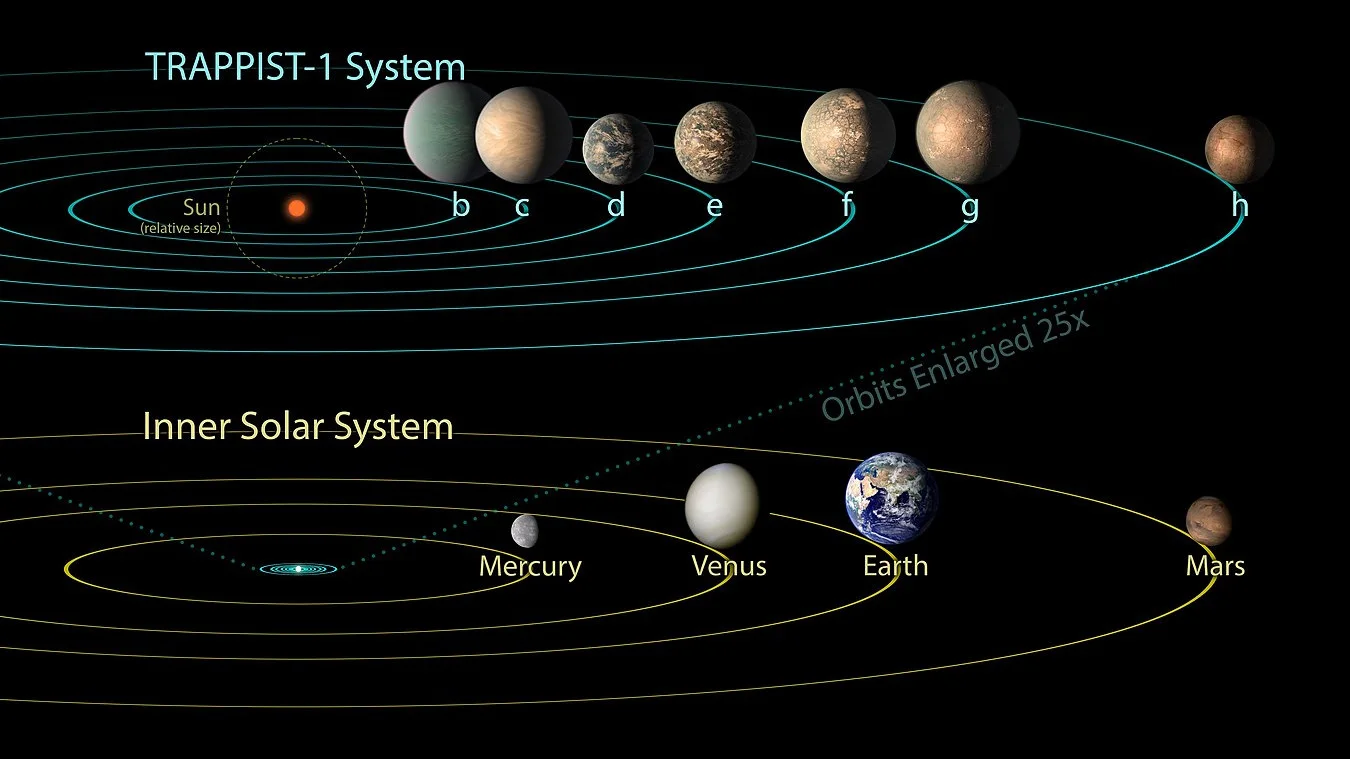
Astronomers map 8,000 kph winds on a giant alien exoplanet
The weather forecast on exoplanet WASP-43 b: clear during the day, cloudy at night, with winds topping 8,000 kilometres per hour!
The James Webb Space Telescope is not just revealing the wonders of the universe to us. Astronomers can also use this powerful eye on the cosmos to figure out what the weather is on distant alien worlds.
Just over 280 light years away from Earth there is a star called WASP-43. It's an orange dwarf star roughly half the size of our Sun and faint enough in our night sky that you'd have trouble seeing it even with a typical backyard telescope.
What makes this star special, though, is the one immense exoplanet we know of that orbits it — WASP-43 b, aka Astrolábos.
Astrolábos is an exoplanet of incredible extremes. It is roughly the same size as Jupiter, but 'weighs in' at nearly twice Jupiter's mass. Unlike the gas giants in our solar system, though, this exoplanet is extremely close to its star — just 2 million km away or about 4 per cent of Mercury's distance to the Sun. As a result, the planet is tidally locked to its star, with one side seeing perpetual daylight and the other side experiencing perpetual night, and it takes only about 19.5 hours to complete one orbit.

The orbit of Astrolábos around WASP-43 is plotted in this diagram, showing its distance (around 2 million kilometres), and the relative sizes of the star (about half the diameter of the Sun) and planet (roughly equal to Jupiter). Although the full planetary orbit is shown here, from our perspective, the planet actually transits across its star on the near side and passes behind the star on the far side. (NASA, ESA, K. Stevenson, L. Kreidberg, and J. Bean (University of Chicago), and Z. Levay (STScI))
Fascinated by a planet unlike anything we have here in our own solar system, astronomers have previously used both the Hubble Space Telescope and the Spitzer Space Telescope to observe this alien world and learn more about it.
Astrolábos is too far away from us and too close to its star for any of our telescopes to get a direct picture of it. What these telescopes can do, though, is observe the system — the star and the planet together — and watch how the light from the pair changes over time. Plus, we are very lucky that this pair is lined up perfectly so that the planet transits its star. That is, from our perspective, the planet crosses directly in front of the star and then passes behind it during each orbit.

MIRI data shows how the combined brightness of the star and planet changed over the 24 hours of observations. The system appears brightest just before and just after the planet passes behind the star, when Webb sees both the star and the bright side of the planet. The system gradually dims as the planet's nightside rotates into view, and then significantly around the mid-point of the observations, when the planet passes in front of the star, blocking some of its light. (Science credits: Taylor J. Bell (BAERI); Joanna Barstow (Open University); Michael Roman (University of Leicester). Image credits: NASA, ESA, CSA, Ralf Crawford (STScI))
The latest observations, taken with the James Webb Space Telescope, have revealed that this exoplanet has some truly mind-boggling extreme weather.
Daily Highs and Nightly Lows
"With Hubble, we could clearly see that there is water vapour on the dayside. Both Hubble and Spitzer suggested there might be clouds on the nightside, but we needed more precise measurements from Webb to really begin mapping the temperature, cloud cover, winds, and more detailed atmospheric composition all the way around the planet," Dr. Taylor Bell, the lead author of the research at the Bay Area Environmental Research Institute, said in a NASA press release. While Bell currently conducts exoplanet research at BAERI, in Mountain View, Calif., he is originally from Saskatoon and earned his Ph.D. at McGill University in Montreal.
Using Webb's Mid-Infrared Instrument (MIRI) to observe WASP-43 and Astrolábos roughly once every 10 seconds for a total of 26.5 hours, Bell and his colleagues were able to record more than one full orbit of the planet. This gave them a 'look' at both the day and night sides, while also providing them with a reference view of just the star each time Astrolábos ducked behind it.
"By observing over an entire orbit, we were able to calculate the temperature of different sides of the planet as they rotate into view," Bell explained. "From that, we could construct a rough map of temperature across the planet."
Previous observations set limits for the temperatures on the two sides of Astrolábos. The day side was expected to reach highs of around 1,500°C, while the night side would get down to a low of about 500°C.
The greater sensitivity of Webb's instruments has now refined this temperature map, revealing that the day side gets up to 1,250°C — hot enough to forge iron, says NASA — while its night side is a relatively cooler 600°C.

From more than 8,000 measurements of the brightness of WASP-43 and WASP-43 b by Webb's MIRI (the Mid-Infrared Instrument), astronomers generated four maps of the planet's temperatures. (Science credits: Science: Taylor J. Bell (BAERI); Joanna Barstow (Open University); Michael Roman (University of Leicester). Image credits: NASA, ESA, CSA, Ralf Crawford (STScI))
Clear Days and Cloudy Nights
With these temperature extremes in mind, the research team simulated the planet's atmosphere using a number of General Circulation Models, the same kind of computer models used to study Earth's climate, to get an idea of what the weather conditions would be like on this alien world.
"We took these different model atmospheres and essentially asked, 'What would we see if we were to observe these simulated atmospheres with JWST? What would their data look like, and how would they compare to what we see in the actual observations of WASP-43b?' So we simulated the light emitted from these different models and compared those simulated observations to the real observations," Dr Michael Roman, a coauthor of the research from the University of Leicester, said in a press release.

An artist's interpretation of what the hot gas-giant exoplanet WASP-43 b, aka Astrolábos, may look like. (NASA, ESA, CSA, Ralf Crawford (STScI))
Their comparison between the models and what they saw from JWST suggests that the day side of Astrolábos has clear skies, and the night side likely has a thick layer of insulating clouds.
Extreme Winds
Also, with a 650-degree temperature difference between the two sides of the planet, the rising, churning air on the day side combined with the sinking air on the night side would drive some spectacularly extreme winds.
As for how fast those winds would blow, it was this exoplanet's odd lack of one particular atmospheric gas — methane — that provided a clue.
Methane is abundant in the atmospheres of all four gas giant planets in our solar system. Thus, it's reasonable to assume that any gas giant exoplanets made of similar stuff will also contain methane. But the researchers didn't find any in their observations of Astrolábos.

Although Jupiter's clouds are made of water droplets at lower levels and ammonia ice at high altitudes, methane has been detected in abundance in its atmosphere. (NASA/JPL-Caltech/SwRI/MSSS/Tanya Oleksuik)
On the exoplanet's day-lit side, it's too hot for methane. The carbon and hydrogen atoms in the atmosphere there would have too much energy to bond together. Also, any methane molecules that were carried on the winds from the dark side would absorb so much heat energy that they would fly apart.
For the night side, though, temperatures are cool enough that methane can form and remain stable. It would just be a matter of time, both for the air to cool after the wind carries it across the terminator into night, and for the chemical reactions to take place that produce methane.
"If winds move gas around from the dayside to the nightside and back again fast enough, there isn't enough time for the expected chemical reactions to produce detectable amounts of methane on the nightside," study co-author Dr. Joanna Barstow, who studies exoplanet atmospheres at The Open University in the U.K., said in a press release.
"The fact that we don't see methane tells us that WASP-43 b must have wind speeds reaching something like 5,000 miles per hour," Barstow added.
In metric, 5,000 miles per hour is roughly equal to 8,000 kilometres per hour.

*The diagram of WASP-43 b is overlayed with the expected atmospheric components (top), which includes carbon monoxide on the day side and methane on the night side. The observed components (bottom) do not include methane, though, and have only carbon monoxide on both sides of the planet. (NASA, ESA, CSA, Ralf Crawford (STScI), Dr. Joanna Barstow)
So, while the researchers had expected to find different mixes of atmospheric gases between Astrolábos' two sides, they instead discovered a fairly uniform composition, apparently due to the exoplanet's extreme winds.
What's Next?
According to NASA, "[this] investigation is just the latest demonstration of the exoplanet science now possible with Webb's extraordinary ability to measure temperature variations and detect atmospheric gases trillions of miles away."

The seven known exoplanets in the TRAPPIST-1 system compared to the inner portion of our own solar system system. The tiny blue orbits inside the orbit of Mercury represent the actual size of the TRAPPIST-1 system. (NASA/JPL-Caltech)
The chances of a 'hot Jupiter' planet like WASP-43b hosting life are extremely slim. However, further observations of exoplanets using Webb, such as those in the TRAPPIST-1 planetary system (shown in the artist's rendition above), could someday reveal alien worlds that undoubtedly harbour life as we know it.











